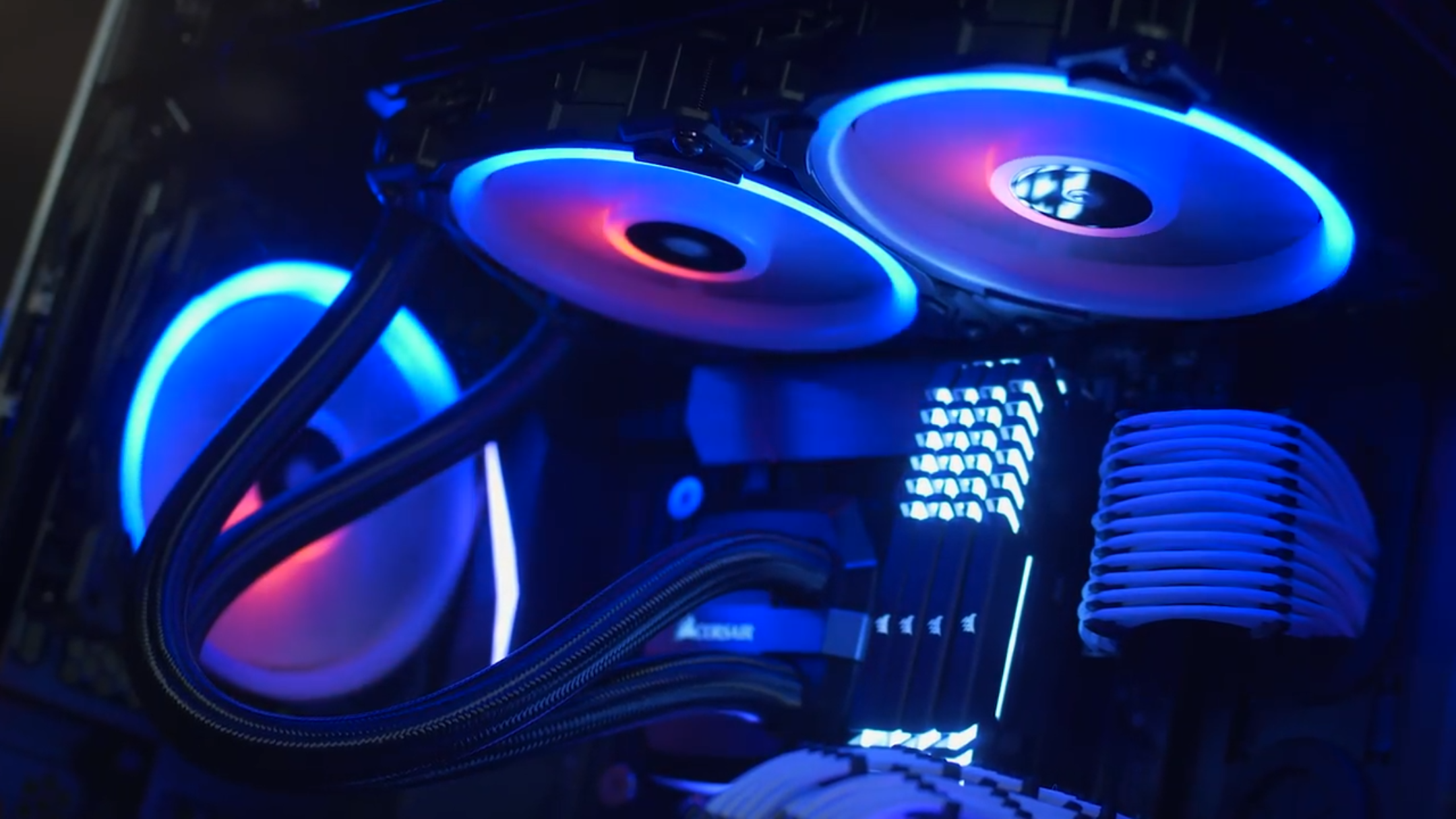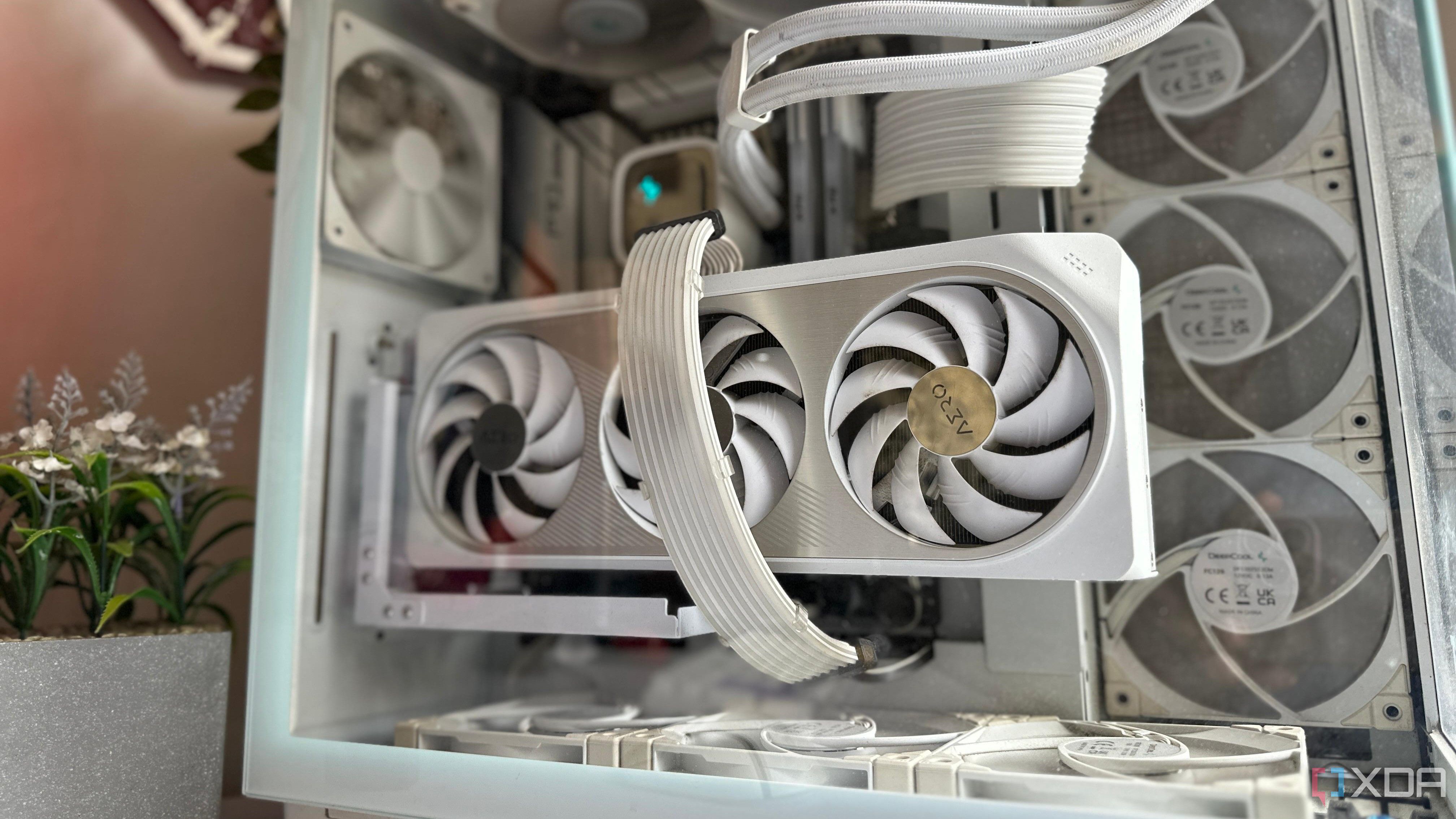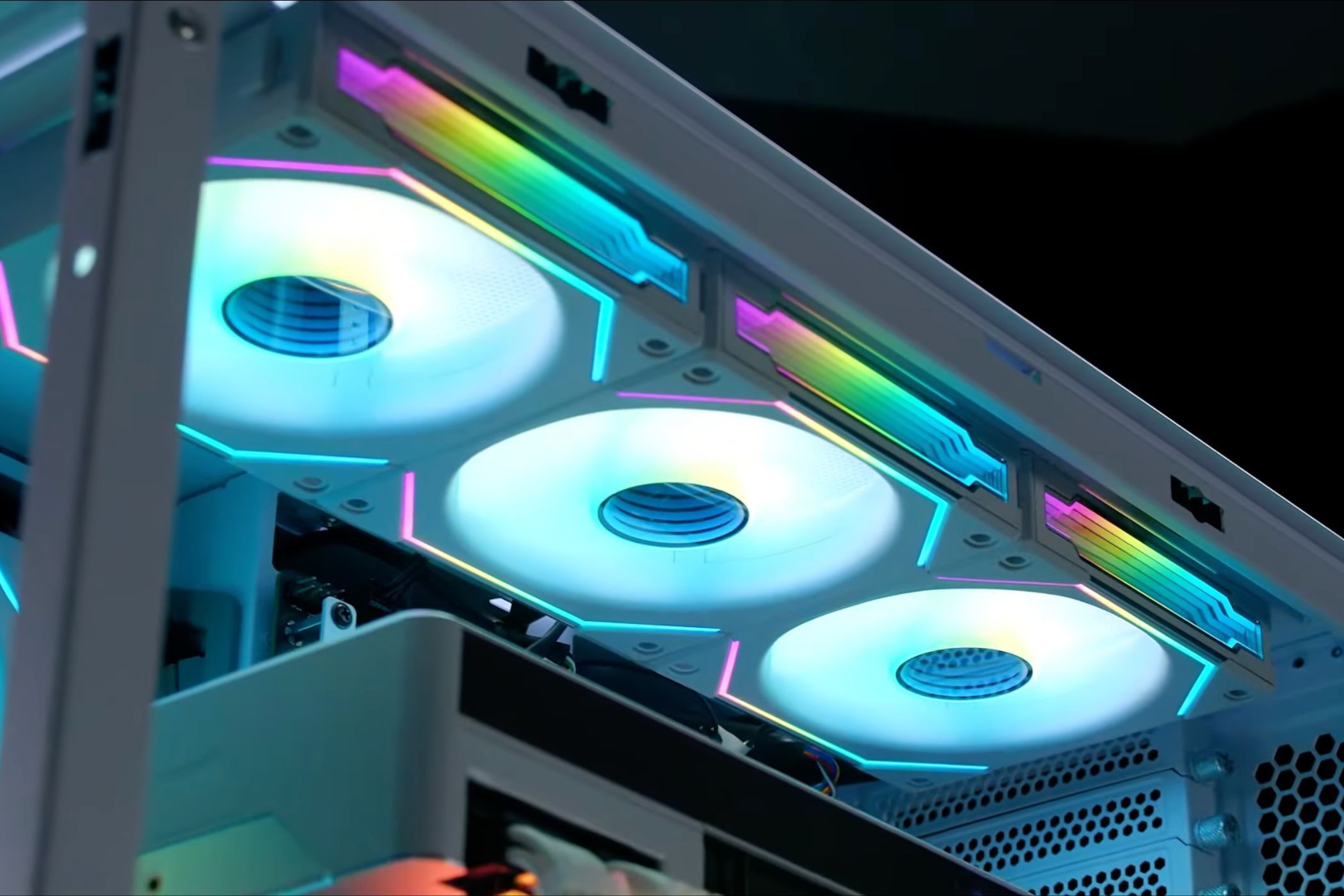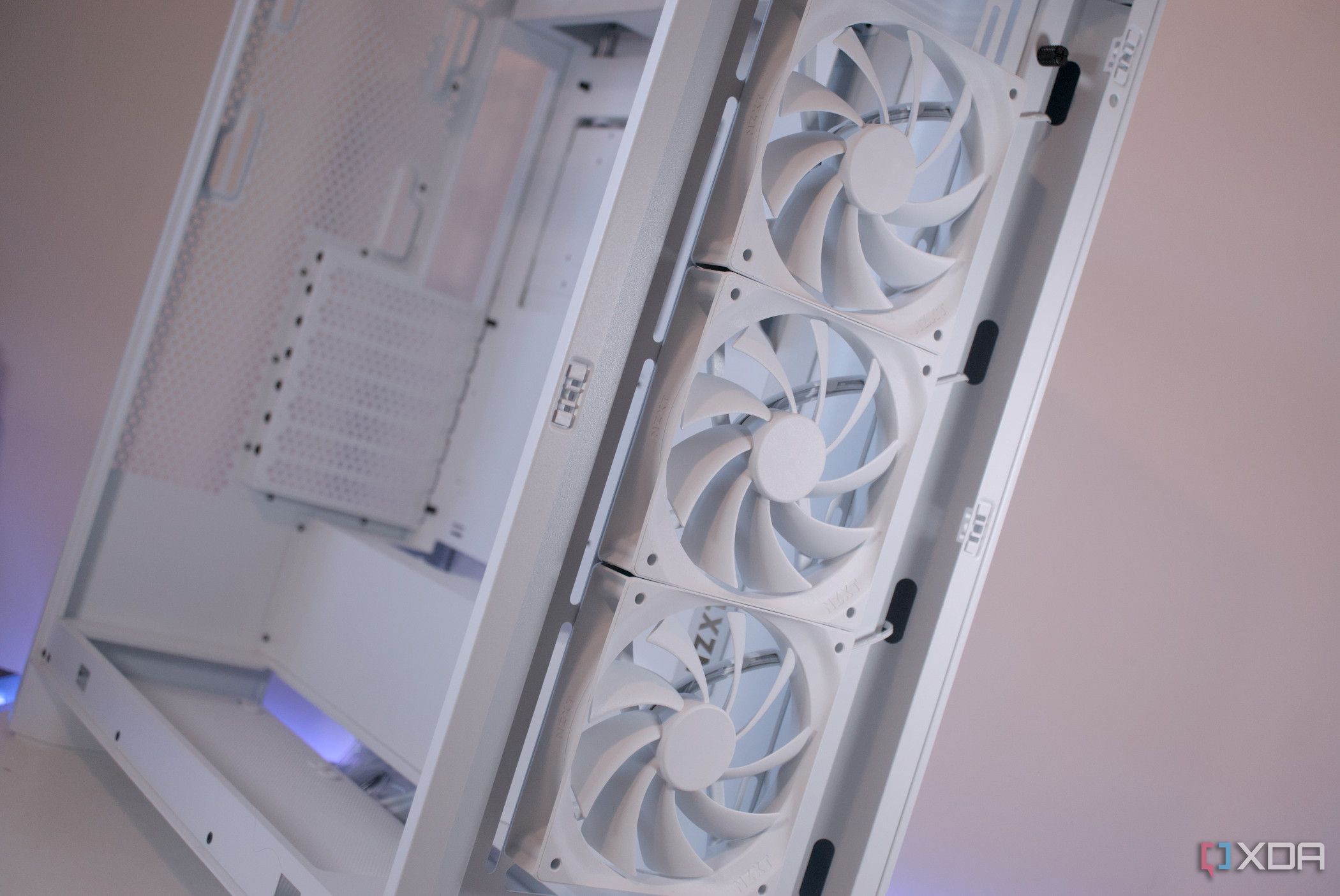Optimizing your PC’s airflow is not an optional part of building a PC; it’s essential to keep your system cool, silent, and performing at its potential. While most users know the basics of PC airflow when it comes to fan configuration, case choice, positive or negative pressure, and CPU coolers, I still see common mistakes on many PCs, especially mid-tower builds.
Unlike spacious full-tower cases where you can get away with some of these airflow mistakes, mid-towers need a bit more care, at least during the first build. It’s worth giving your mid-tower PC a second look to ensure you haven’t unknowingly committed any of these blunders.

Related
5 things I wish I knew about cooling before building my gaming PC
It would have saved me some money and a lot of hassle
5
Ignoring cable management
It’s even more important in mid-towers
Unless you’re a fan of humongous PC cases and have a large desk to accommodate one, you’re probably using one of the popular mid-tower cases for your PC. This makes cable management a necessity instead of a novelty. Without properly routed cables at the front and back of the motherboard, you can’t expect to make the most of your case, fans, and CPU cooler.
Perfect cable management gives your cooling hardware a helping hand by eliminating the infamous cable jungle and minimizing areas for heat and dust to get trapped. When you don’t have endless space inside your PC tower, you have to use every cubic inch like it’s a precious resource. And cable management isn’t rocket science; a decent case and modular PSU already get you halfway there. The rest is simply being patient and using the available cable routing features to the fullest.

Related
7 cable management tricks I regret not learning sooner
Making sense of the cable mess inside and outside my PC would have been simpler
4
Leaving no space around the case for exhaust
The externals matter too
Perfecting the airflow inside your PC case isn’t enough; you also need to ensure your case has enough room around it to throw all the hair outside. Often, users shove their PCs against the wall, blocking the exhaust vents and essentially choking the PC with hot air. Your case needs a few inches of free space around it to be able to move hot air out of it.
You might think that the front or side intake panel having plenty of space is enough for optimized airflow. However, that’s only half the story. The rear exhaust panel might not affect your system temps as much as the front intake, but it still demands some attention. Just ensure you leave 3–4 inches of space between the case and the wall, and you’re golden.

Related
3 ways to improve your PC’s airflow without buying more fans
Not a fan of more fans? Here’s how to make the most of the ones you have.
3
Ignoring the type and size of case fans
Rethink static pressure and 120mm fans
Even if you are doing everything else right, the wrong type of case fans can hurt your cooling efforts. While static pressure case fans are ideal where they’re likely to encounter resistance or internal components in the way, airflow fans work much better for most users. Static pressure fans should be used for compact cases where space is a luxury, whereas airflow fans work best for mid-tower cases that aren’t as starved for volume.
Another thing to keep in mind when buying case fans is that 120mm isn’t the only size on the market, as far as intake fans are concerned. While most mid-tower cases only allow 120mm fans at the rear, you can easily install larger 140mm fans at the front for intake. This allows you to push the same amount of air at lower RPMs, and hence, reduce the noise levels. Some cases even allow 200mm fans at the front. Decide if such a case is within your budget, and if it doesn’t have pre-installed fans, try to prioritize larger fans.

Related
6 mistakes you’re making when buying new case fans for your PC
Buying new case fans is a bit more complicated than you’d think
2
Having negative air pressure
Be positive
You can have positive, negative, or neutral pressure inside your PC, depending on the number and configuration of your fans. For most people using a mid-tower case, positive pressure is recommended for the best results. Unlike in a large case, where the extra volume not only increases heat dissipation due to convection, but also gives dust less chance of settling on components, a mid-tower benefits more from having positive air pressure.
Having more air pulled into the case than being pushed out means you minimize dust deposits on your components. Positive pressure also ensures hot air doesn’t stay inside for long, as it’s expelled through all available exits due to the higher intake than exhaust. As a result, you need to clean your PC less frequently, and also get to experience lower fan noise since the fans don’t need to spin as rapidly. Negative air pressure leads to more dust getting sucked inside the PC, so it’s best to avoid it.

Related
5 myths about fans that are hurting your gaming PC’s performance
Myths about PC fans might be keeping you from enjoying better temps, performance, and noise levels.
1
Installing insufficient fans
The stock configuration isn’t always ideal
Often, users stick with the fans pre-installed in their case — sometimes, this can even mean a single intake and no exhaust fan. Having a minimum number of case fans on your PC is important to pull in sufficient fresh air and expel hot air. Making do with a single intake and exhaust fan isn’t the end of the world, but it’s far from the best airflow situation on a PC.
Ideally, you should have at least 3 intake fans (or 2 if they’re larger fans) and 2 exhaust fans in a mid-tower case — one at the rear and the other at the top. If you have an AIO radiator set up as exhaust at the top, you can skip the rear exhaust. This configuration ensures you’re not starving your case of fresh air while also having the right number of exhaust fans to maintain positive air pressure inside the PC.

Corsair LL120 RGB
The Corsair LL120 RGB is a premium PWM fan with hydraulic bearings and gorgeous lighting effects.

Related
How many fans should a PC have?
You know your PC needs fans but how many do you really need? Let’s find out
Ensure your mid-tower doesn’t have “mid” airflow
Once you know the downsides of these common airflow mistakes, you’re better equipped to avoid them in the future. You might be guilty of them on your existing PC, which is why reassessing your current fan configuration, case placement, and cable management is a good idea. Fixing these mistakes doesn’t take too much time (or money), and it can vastly improve the thermals and noise levels inside your PC.










